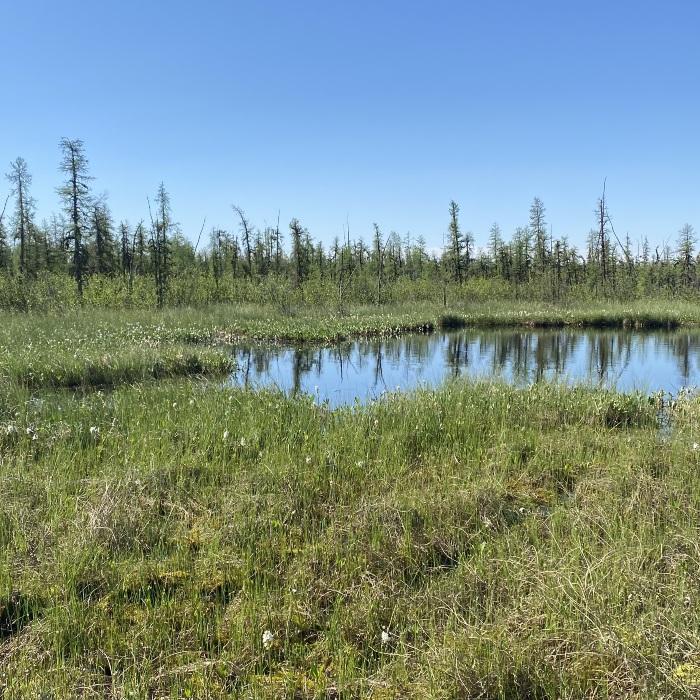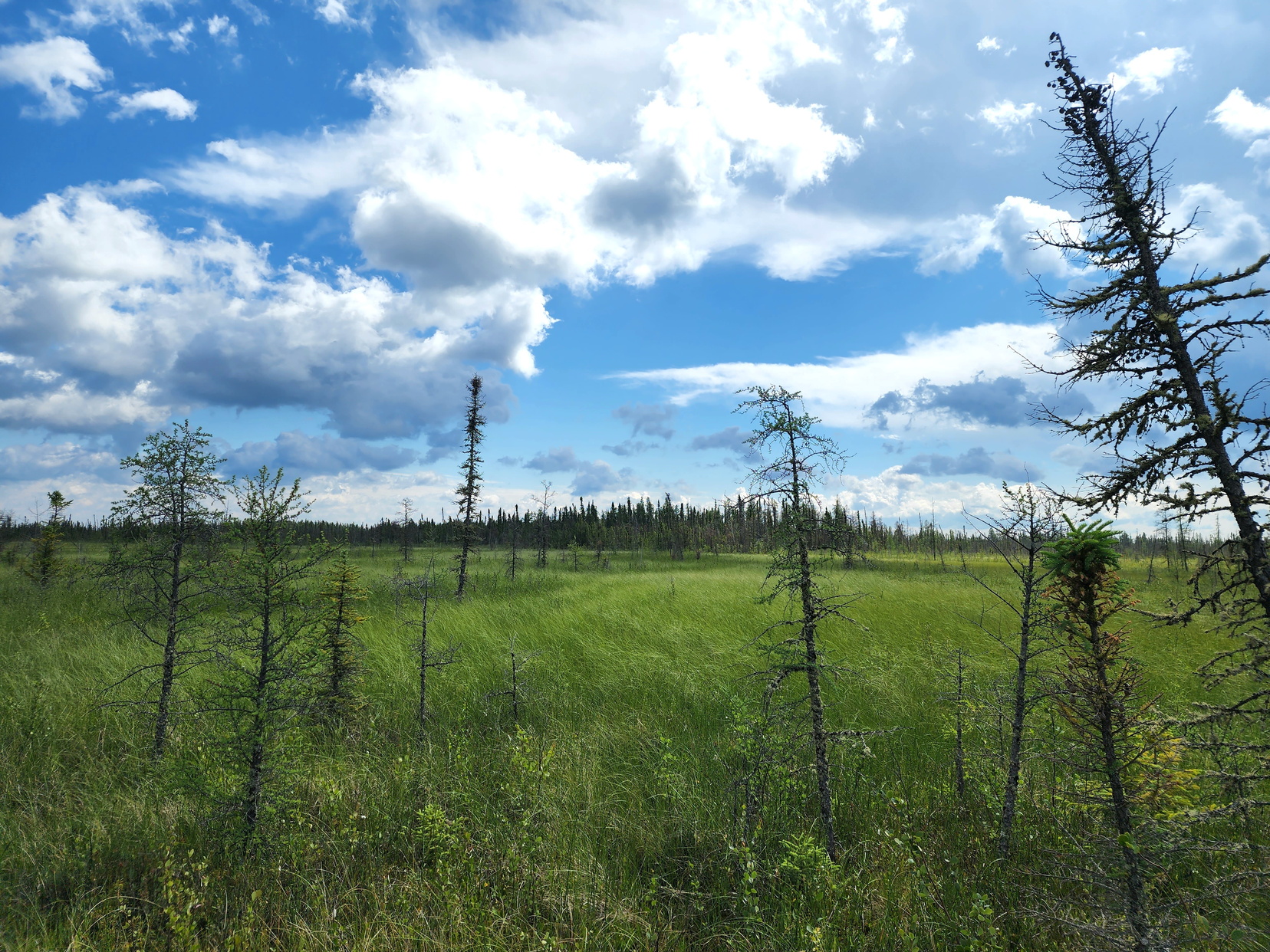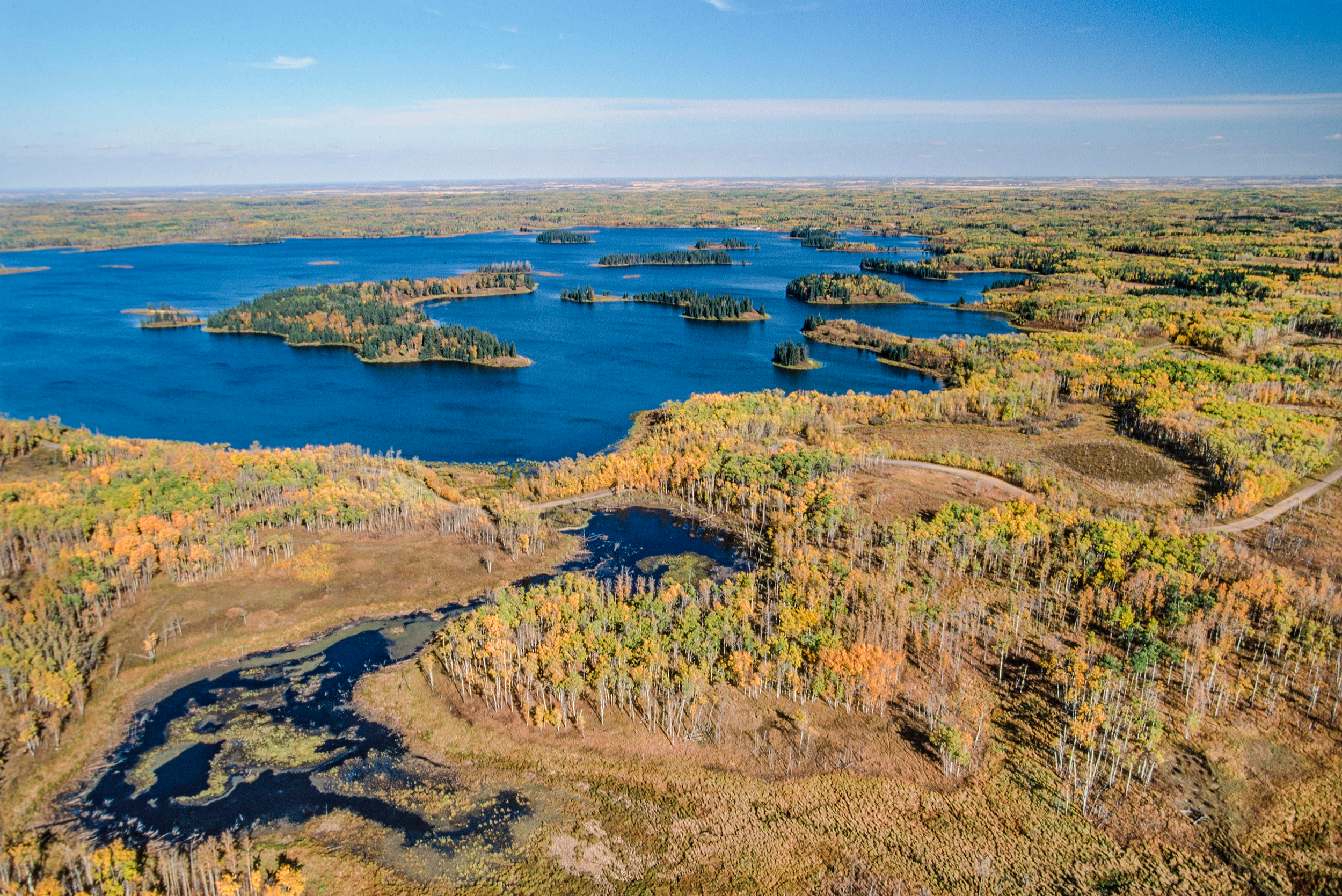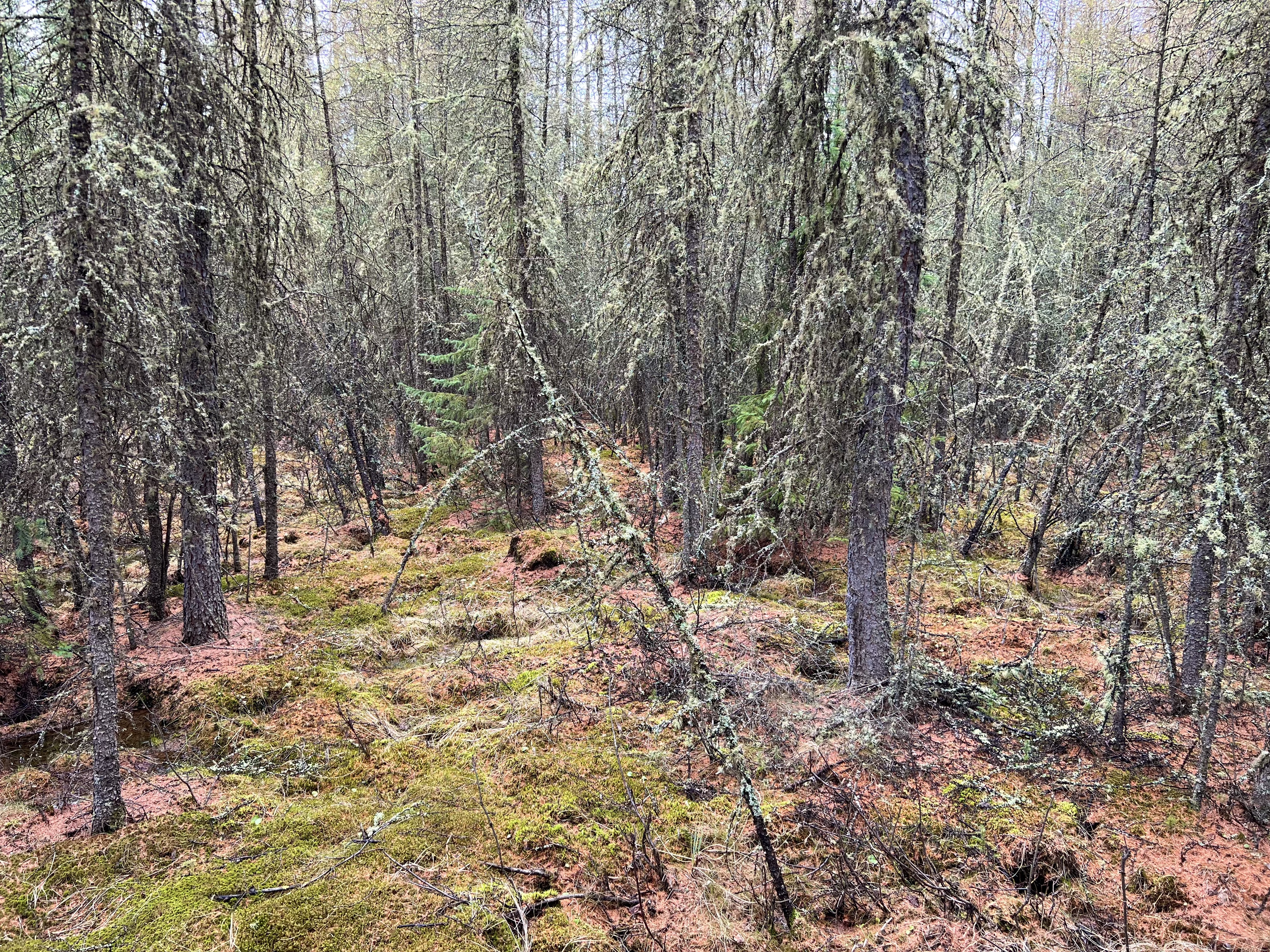Woodland Caribou
Rangifer tarandus
Woodland Caribou depend on treed fens and bogs, where they forage on lichen—their primary food source—during the winter.
Section 2.2
Summary of the area of wetlands in the forested region by wetland class with a description of the most common classes.


Total area of wetlands in the forested region: 28.6%

In this section, we summarize wetland class and percent area covering the forested region in Alberta. We also highlight key wetland characteristics and species associated with the most common wetland classes.

The computer "learned" the characteristics of different wetland types—such as topographic position and vegetation properties—to identify wetland locations.
Area of Wetlands in the Forested Region
Current wetland area in the forested region: 28.6%
Distribution of wetlands in the forested region of Alberta. Click on the legend to turn wetland types on and off. Note: wetlands cover less area than what is displayed in the map.
Click on a tab for a description of the most common wetlands in the forested region. For more detailed descriptions of each wetland class, refer to the Boreal Wetlands Fact Sheets[1] and the Alberta Wetland Classification System Field Guide[3].



Ducks Unlimited Canada. Boreal wetlands fact sheets. Available at: https://www.ducks.ca/resources/industry/boreal-wetland-fact-sheets/
Ducks Unlimited Canada. 2017. Boreal wetlands and climate change. Available at: https://abnawmp.ca/wp-content/uploads/2020/09/Boreal-Science-Summary-Final_web.pdf
Ducks Unlimited Canada. 2021. Alberta wetland classification system field guide. Available at: https://www.ducks.ca/resources/industry/alberta-wetland-classification-guide/
DeLancey, E.R., J.F. Simms, M. Mahdianpari, B. Brisco, C.Mahoney, and J. Kariyeva. 2020. Comparing deep learning and shallow learning for large-scale wetland classification in Alberta, Canada. Remote Sensing 12(1): 2. Available at: https://doi.org/10.3390/rs12010002
ABMI Geospatial Centre. 2021. ABMI wetland inventory: technical documentation. Report available at: https://abmi.ca/home/data-analytics/da-top/da-product-overview/Advanced-Landcover-Prediction-and-Habitat-Assessment--ALPHA--Products/ABMI-Wetland-Inventory.html
ABMI. 2017. 3 x 7-km Sample-based human footprint data. Available at: https://abmi.ca/home/data-analytics/da-top/da-product-overview/Human-Footprint-Products/Human-Footprint-Sample-Based-Inventory.htm
ABMI. 2018. Wall-to-wall human footprint inventory. Available at: https://abmi.ca/home/data-analytics/da-top/da-product-overview/Human-Footprint-Products/HF-inventory.htm

Jennifer Hird, Lead Scientist—Earth Observation Insights Unit, Alberta Biodiversity Monitoring Institute (ABMI)
Jen has supported geospatial research and development within the ABMI for over 10 years. In her current role, she leads the organization's satellite-based mapping and monitoring efforts.
If you have questions about the ABMI's wetland mapping program, please get in touch: jennifer.hird@ualberta.ca